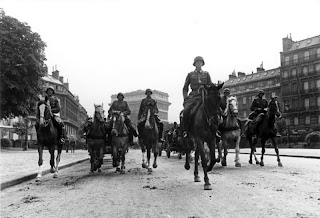 |
| A flight of Stukas October 1943. Photo sourced from WikiCommons. |
The Stuka was unique in that it had bent gull-wings and it also had a siren attached to it. When the plane dove on the enemy formations, wind would pass through the siren and the plane would be heard shrieking down on its 'prey' right before it released its bomb with pinpoint accuracy. The Stuka, in fact, was one of the best dive bombers the Luftwaffe had in its arsenal.
However, it was after the conquest of mainland Europe that the Stuka's main problems surfaced. When Germany turned its sights towards bombing Britain into submission, the Stuka was one of the main bombers used in that campaign. However, the fact that it was very slow and couldn't maneuver very well in tight turns made it easy prey for the RAF. This made the limitations of the Stuka painfully clear to the Germans.
Eventually the Stuka was phased out of the Western lines and shipped to the Eastern front, where it continued to be used in its ground support role throughout the rest of the war, raining screaming death from above. Until next time take care, and thanks for reading.
(Facts sourced from "The Encyclopedia of Aircraft f World War II" edited by Paul Eden)





